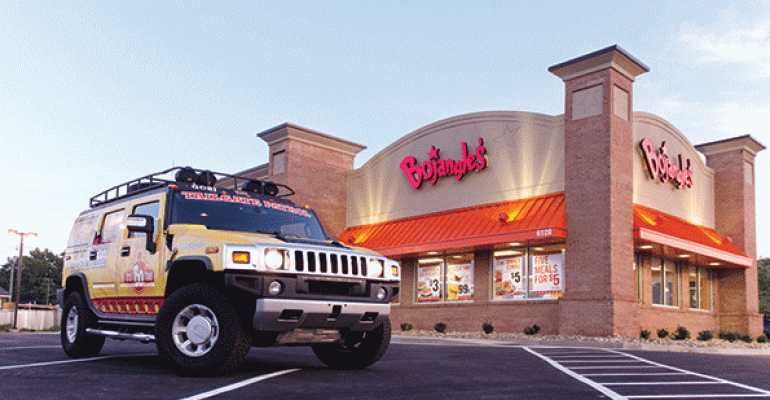Bojangles’ Inc. stock price rose more than 12 percent on Friday after the company reported surprisingly strong earnings growth in the quarter ended Sept. 25.
Revenues at the Charlotte-based chicken-and-biscuit chain increased 7.2 percent to $133.2 million in the third quarter from $124.3 million the same period a year ago. Net income, meanwhile, increased 12.4 percent to $10 million, or 27 cents per share, from $8.9 million, or 24 cents.
Both numbers beat analysts’ expectations and the stock rose accordingly. The stock had fallen more than 6 percent year to date entering the day and is now up on the year.
“We are developing the Bojangles’ brand the right way in a manner that is long-term-oriented, sustainable and has transformative potential,” CEO Clifton Rutledge said on the company’s earnings call Thursday.
“Our consistent record of performance in growing our top and bottom lines is a testament to our leadership and reflects this measured approach.”
Same-store sales at the nearly 700-unit chain increased 0.8 percent in the quarter. On a two-year basis, that growth was 4.8 percent. Bojangles’ same-store sales have increased for 26 straight quarters.
The company recently broke ground on its new prototype, which Rutledge called “Bojangles’ of the Future.” The company reviewed the exterior and interior design of its restaurants to determine the elements that will work in future brand remodels.
Bojangles is also working on what it calls the “kitchen of the future” as it looks to make its kitchens more efficient with a better design and layout.
The company said that it had to close 90 restaurants for a time last month due to Hurricane Matthew. But, Rutledge said, “Restaurants often incurred significant business because people didn’t have power and still had access to their cars to go do things.”
Bojangles has installed a new point-of-sale system that it hopes will lead to work on mobile payment, large online ordering and loyalty. It is working with franchisees to switch over to the platform, “which we believe will open up new opportunities for impactful and consistent consumer engagement.”
Food costs at the chain decreased slightly, but labor costs increased slightly in the period. The company said that’s a sign of things to come.
“We expect our restaurant labor costs will continue to increase due to the tightening labor market, certain labor initiatives across company-operated restaurants,” chief financial officer John Jordan said. He said the company might start using more full-time workers, rather than part-time, and also expects higher costs associated with new overtime regulations.
Contact Jonathan Maze at [email protected]
Follow him on Twitter: @jonathanamaze





